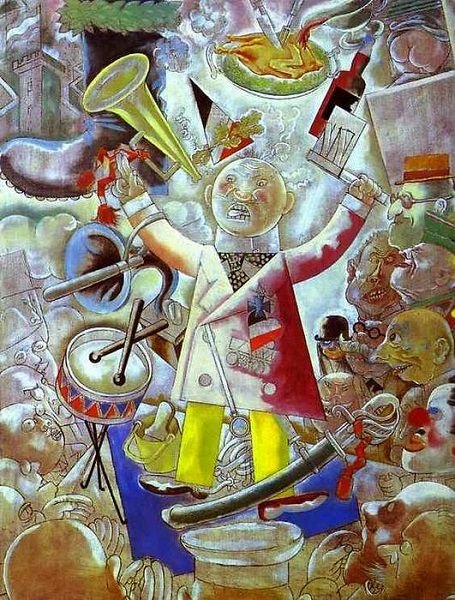Specific bearer of aesthetic value is the form of the perceived or created by man object, which expresses the measure of its organization and coherence. But the specific nature of consistency does not make every system dependent on what its content determines; so the body of the animals is organized not as much as the plants, and the sporting celebration is not as much as the military operation. The form taken by itself or a principle of its organization, viewed in isolation from the content, can not have any value. The aesthetic value of the form is determined by its relation to its content, not by any abstractly described structural properties.
The shape can not be aesthetically assessed if it is not matched with content. In the aesthetic perception of reality and art, comparing form and content is not a logical operation, a reflection that analyzes the action of thought. Man makes this comparison intuitively at the same moment as he confronts the object and contemplates it. In aesthetic perception, we unknowingly sense the content of the form, not revealing it mentally. The aesthetic assessment is unthinkable without any kind of knowledge of the subject, which has a non-conceptual but intuitive character, because comparing its form with its content is an act of knowledge in whatever form this knowledge is made of. The aesthetic significance of the content form is revealed especially in art - above all in its fields such as dance, music, ornament, whose non-pictorial nature does not allow the viewer or the listener to ask the question: "what is depicted here and is it successful this image? ", and forces the perceiver to focus on the contemplation of the very form of the work. The same must be said about the aesthetic assessment of man. It is clear what is meant when talking about his physical beauty - it is about the aesthetic value of proportionality, the configuration, the plasticity of its physical being. But what is the meaning of "spiritual beauty," if inner, psychic content is subject not to an aesthetic but an ethical assessment? Indeed, sometimes the definition of "spiritual beauty" is simply a metaphor, as an allegorical definition of the moral value of human nature; but in many cases this definition also has a genuine aesthetic sense if it characterizes the inner structure of the human soul's forces - their harmony, proportionality, spiritual "proportionality". That is why the ideal of the wonderful person is a versatile and harmoniously developed personality. The one-sidedness of man can be assessed aesthetically different: it is perceived as something magnificent if a one-sided development has received some noble, morally valuable feature of character - patriotism, altruism, etc., or as something low if the character prevails unconditionally selfish motives, self-love and spoil; but in all cases the aesthetic value in the spiritual aspect of man, as in all other spheres of being, has not the content itself, but the passage of content into the form or measure of formality, the organization of content.
A sense of measure is a pledge of aesthetic precious behavior, and its absence makes the ugly and comical way a person dresses, dances, holds in society, and so on. This means that one perceives in the subject the corresponding measure and process of creating beauty, and in its perception. The content form of a particular object is a bearer of aesthetic value. It is only as its medium, but not as the very value, because the form of the object has an ontological status; it exists objectively outside and independently of the subject, its needs, interests and consciousness, whereas value is an axiological category that characterizes the importance of object in the subject's vital activity. The properties of the object shape that we perceive and appreciate aesthetically (rhythm, color and sound, etc.) taken by ourselves are not yet aesthetic yet. They exist in the material world regardless of whether we appreciate them as aesthetic or not, and even their perception and knowledge by man does not always reveal their aesthetic "potential". Aesthetic significance is inherent in these objective properties of the subject world, and it is only in an opportunity, whether this possibility will become a reality, whether these properties will become real carriers of aesthetic value depends not on themselves but rather on the system of object- subjective relationship in which the particular subject possesses them. In order to obtain the content form aesthetic significance, an aesthetic situation must arise, as an object can only become known in the presence of a "sign of a situation".


So what you're saying is... "Beauty lies in the eyes of the beholder", where beauty is value, eyes are the context and the beholder must interpret. Something like that?
Well, yes , you can say it that way. :)
A personal request: please consider inserting some new lines here and there. It is a great post, but the lack of text formating made it a little bit more difficult to read than it should be.
very good@godflesh
thank you
You got a 5.72% upvote from @postpromoter courtesy of @godflesh!
Want to promote your posts too? Check out the Steem Bot Tracker website for more info. If you would like to support the development of @postpromoter and the bot tracker please vote for @yabapmatt for witness!
Very good :)
Thank you